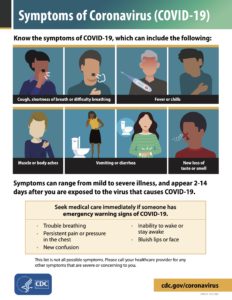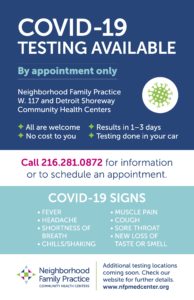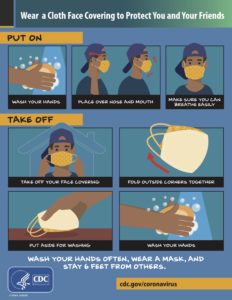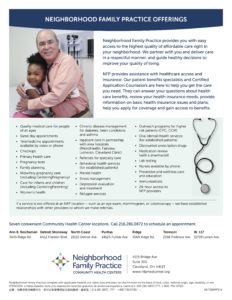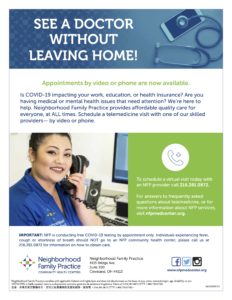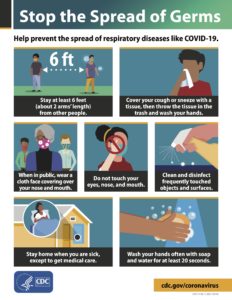My Journey from Bhutan to US - Officer Damber Subba
My Journey from Bhutan to US
- Written by Officer Damber Subba
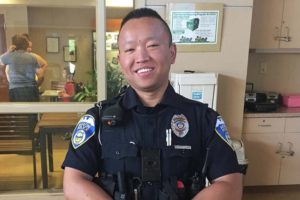
I was born in Bhutan. I’m from Lhothsampa (Southerner) ethnical group. My great-great grandparents migrated from Nepal to Bhutan and they became Citizens of Bhutan. We speak Nepali. Ngalop (Western and Northern Part) People were culturally dominant in the country. King, Royal Family, and Ministers are from Ngalop. Ngalop originally migrated from Tibet. They speak Dzongkha.
In 1980s, The Government of Bhutan, King, implemented “One Nation One People” policy. The policy was basically a propaganda against Nepali Speaking Bhutanese Citizens. It was an ethnic cleansing movement against us. We were forced to speak Dzongkha. We were forced to wear Ngalop’s outfit. Our Nepali books were burned by the royal army. We protested peacefully against the dictatorship Monarchial System and asked for a fair/impartial treatment. In return, we were tortured physically and mentally which resulted into hundreds of casualties on our side. We ended up leaving our village and our country Bhutan. Many people died in the jungle as we were escaping from the persecution. There were more than 100,000 people left the country.
I was only two and half year old when we left Bhutan. We settled on the bank of Mahi River, which is one of the borders between India and Nepal. We made a small hut from tree branches and leaves. Nothing was free and available, but water from Mahi River. I lost one of my older sisters from poor living situation. She was one of thousands who died in Mahi Camp from lack of food and nutrition and viruses. There was no health center. We stayed there over six month.
Eventually, UNHCR and Nepal Government CARITAS Nepal rescued us and put us in seven different camps in Eastern Part of Nepal. I spent 17 years in Beldangi – ll Refugee Camp. I remember vividly how it feels not to have food, clothes, and securities and to be discriminated from local people. I remember clearly how it feels for not able to dream who you want to be when you grow up. I remember like yesterday my parents struggle each and every single day to buy one pair of new school uniform for me or to buy a nice meal once in a year for Dashain and Tihar.
In 2008, USA, Denmark, Norway, Netherlands, Australia, Canada, and UK offered to resettle refugees. I chose USA since this is the “Land of Opportunities.” I even heard that heaven is only couple miles away from US. I came with my mom, dad, one younger brother, and two younger sisters in July 2008 in Akron, Ohio through the International Institute of Akron. I have been blessed to have agencies like IIA, Asian INC and other.
I worked in Akron Foundry Company at first and at the same time going to college and getting trainings to become a professional interpreter. I became Nationally Certified Medial Interpreter in Nepali Language and I started to work for Akron Children’s Hospital. It was very fulfilling experience to be conduit between immigrant community and mainstream population. I always enjoyed helping Healthcare Providers and Non-English Speaking patients.
In 2014, I became a US Citizen and that moment was one of the GREATEST moments of my life. As soon as I became a US Citizen I bought a big US Flag and hung in front of my house and a flag in my car. Then, I started to train to become a police officer so that I could be helpful for Akron Police Department and for the community. I was trying to find a way to give back to this community and ultimately to this country since this country have done so much to us.
I became an officer in Akron Police Department in 2018 and I was the first officer from refugee background. Since I became police, I was able to help so many people in so many different instances such as elderly person paralyzed lying in the house for couple days without any help, rescuing dogs, rescuing children, solving violent crimes and neighbors disputes due to cultural differences and so on. Every single day young boys and girls from different ethnical background such as from Bhutanese Nepali, Burmese, Karen, Congolese, and Afghans ask me how to become an officer. My one brother is Mechanical Engineer. The other brother is in military. Two sisters work in Hospital. I’m living the American Dream big time and I’m proud to be an American!
Gdańsk and Cleveland: Twin Cities and Twin Lighthouses - By Ezra Ellenbogen
Gdańsk and Cleveland: Twin Cities and Twin Lighthouses
- Written by Ezra Ellenbogen
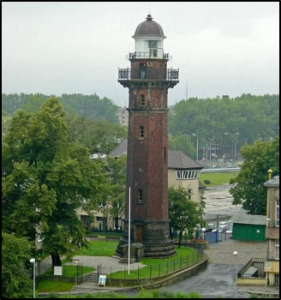
The Gdańsk Nowy Port Light, inspired by the Cleveland Harbor Lighthouse
Photo Credit to Nancy J. Rau via Lighthouse Digest
In 1893, a delegation from Gdańsk, Poland, visited Cleveland on their way to the World Exposition in Chicago.[1]There, the group saw the 1873 Cleveland Harbor Lighthouse, known as one of the most impressive American lighthouses in history. Later that year, the lighthouse had a Polish twin. Gdańsk’s Nowy Port lighthouse went into operation the following year, and even played a part in World War Two.[2] Gdańsk and Cleveland have had a long history of immigration, cultural exchange, and lighthouses, among other things.
Gdańsk (pronounced g-Dy-an-sk) and Cleveland originally pursued a sister city relationship under Mayor Ralph J. Perk, and the partnership was established in 1990 under Mayor Michael R. White.[3]
Polish immigration to Cleveland was critical to the city’s history, especially during its industrialization. Poles constitute one of the largest ethnicities in Cleveland and nearby areas.[4] The first major settlement of Poles in the Greater Cleveland region occurred in the late 1860s, in Berea, a suburb located south of the Cleveland Hopkins International Airport.[5] By 1870, 77 Poles lived in Greater Cleveland. Polish immigration to Cleveland soon picked up - cultural and political pressure and oppression in Prussian and Russian Poland drove a lot of Poles away. At the same time, Cleveland industries were rapidly growing, and transportation across the ocean was inexpensive. By 1920, Poles in the city numbered 35,024, with the highest amount of growth seen between 1900 and 1914. The entire state of Ohio reflected similar patterns, with the Polish population soaring to 67,579 by 1920.[6]
From the 1870s on, significant Polish neighborhoods began to form. Major early concentrations of Polish immigrants included Rolling Mills in Newburgh and the E-65th-Fleet Avenue area. The latter of the two saw significant growth from the 1920s to 1990s, and is now known as Slavic Village or Warszawa. The second major Polish settlement was Poznan, around 79th Street and Superior Avenue. The third early major Polish settlement rose about in Tremont, called Kantowo. In 1882, the Cleveland Rolling Mills Strike led to a considerable growth in Cleveland’s Polish population. Primarily Polish immigrants were recruited in New York to break the strike. Poles became the most prominent group in heavy labor and industry in the city.
Religion was a very important force in early Polish Cleveland politics. In fact, it was the center of the community’s largest conflict. Local church politics drove a division in the city after the removal of Father Anton F. Kolaszewski from the St. Stanislaus Parish in 1892. These church politics heavily divided the community, leading to the establishment of separate newspapers and fraternal organizations, and it even became a force that influenced local elections.
The Polish population of Cleveland peaked in 1930 with 36,668 people. By then, the Polish community of the city had multiple newspapers, banks, churches, and more. Even though religious conflicts within the community had worn down, political differences became chief divisions of Polish communities. Poles in Kantowo, which was originally settled by mostly Russian Poles, tended to be Socialist and tended to support Marshal Joseph Pilsudski. Poles in Warszawa, which was originally settled by mostly Prussian Poles, tended to be in favor of Ignace Paderewski. This was incredibly divisive for Poles in Cleveland. Even the two newspapers reflected the split, with The Wiadomosci being pro-Pilsudski, whereas The Monitor was anti-Pilsudski. Unifying Cleveland’s Polish community, even with the help of organizations, was difficult.
The German invasion of Poland temporarily put the issue aside. However, after World War Two, political divisions became prominent again, this time over opinions on the new Communist state of Poland.
Cleveland’s Polish community was much less divided on American politics, especially after the Great Depression. The city’s Polish community has been predominantly Democratic since then. One important thing to note is that Warszawa and its people have been represented much more within Cleveland politics than other Polish communities. Prominent Polish political figures from Cleveland include Joseph Sawicki, who was elected to the state house in 1906 and to the municipal court in the 1920s and 1930s.
After the 1930s, Cleveland’s Polish population began to decrease. It rose and fell numerous times for decades. However, nowadays, the urban area of Cleveland’s Polish population accounts for almost 33% of the entire state of Ohio’s Polish population.[7]
Cleveland and Gdańsk saw decades of positive interactions, trade, and events before tragedy struck (warning: mention of murder). On Sunday, January 13th, 2019, Paweł Adamowicz, a six-term mayor of Gdańsk, was stabbed brutally at a charity event in Cleveland; he died the next day at the age of 53. Adamowicz was a well-known liberal mayor who made historical strides in defending the rights of immigrants, refugees, and LGBTQ+ people in Gdańsk. The assailant had been released from jail within the past month, and blamed Adamowicz’s former political party, Civic Platform, for his jailing in 2014 following violent attacks.[8] A national mourning was held from the 18th to the 19th of January across Poland. Numerous cities, including Gdańsk and Warsaw, held events of mourning.
Cleveland and Gdańsk’s partnership have had a positive legacy of immigration, cultural exchange, and more, even if there is a tragic event that taints it. Adamowicz will live on in Cleveland and Gdańsk’s heart. As sister cities, the two have built each other up, and it is important to recognize all that has come from their partnership, as well as to keep Adamowicz’s legacy alive alongside it.
- Ezra Ellenbogen
Ezra's blog: One Page Stories
[1] https://www.lighthousefriends.com/light.asp?ID=282
[2] http://latarnia-morska.pl/en/lighthouse-gdansk-nowy-port/
[3] https://case.edu/ech/articles/cleveland-sister-city-partnerships
[4] https://www.cleveland.com/datacentral/2011/10/searchable_database_shows_ethnic_breakdown_for_ohio_cities.html
[5] https://case.edu/ech/articles/p/poles
[6] http://ohiohistorycentral.org/w/Polish_Ohioans
[7] https://data.census.gov/cedsci/table?q=SELECTED%20SOCIAL%20CHARACTERISTICS%20IN%20THE%20UNITED%20STATES&g=0400000US39_400C100US17668&tid=ACSDP1Y2019.DP02&hidePreview=true
[8] https://www.clevescene.com/scene-and-heard/archives/2019/01/14/mayor-of-clevelands-polish-sister-city-assassinated-at-charity-event
Resources from different organizations
Organizations with COVID-19 resources:
- The Center for Community Solutions
- Asian Services In Action ASIA
- Neighborhood Family Practices Med Center
Studying in Japan: My Personal Pilgrimage and Self-Reflection - By Collin Derrig
Studying in Japan: My Personal Pilgrimage and Self-Reflection
– Written by Collin Derrig
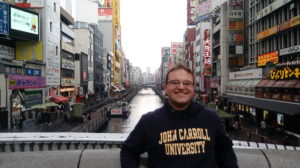
I spent the second semester of my Sophomore year at Kansai Gaidai University in Osaka Prefecture, Japan. That I went alone with no real connection and no peers, actually made the experience even more enriching because I was forced to branch out and not lean on the support structures, I had grown accustomed to during 20 years of life in Northeast Ohio. This lack of structure allowed me to connect with people and places that I never would have and to find a better understanding of my own fears and loves.
I arrived in Osaka via airplane in mid-January of 2019, the first few days were a whirlwind of excitement and orientation where I knew nothing and no one, however the first weekend gave way insecurity. I was lost and nervous till I started walking and watching life around me. Kids played in parks, laundry air-dried hanging from balconies, and people went to the Konbini(Convenience Store). Just as in Ohio, Japan was a place full of people simply trying to live their lives, just like me. That simple walk assuaged my fears and was the true start of a wonderful 5 months.
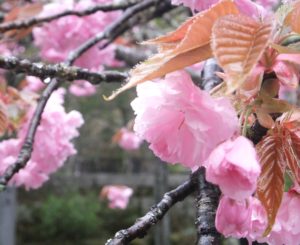
Walking introduced me to people from all over and by talking to them I quickly discovered group of friends from all over the world; Japan, Italy, Florida, Singapore, Australia, Canada, New Zealand, France, and even the remote exotic land of Ravenna, Ohio. Who knew I would find a friend from so close to home by traveling to the other side of the globe? My travels with my friends took us to shopping districts and vibrant urban centers, as well as densely forested mountains and gorgeous Buddhist Temples. These trips to the mountains and the monastic communities that were often centered on them helped me discover my deep fascination with Japanese religion. This worked in perfect tandem with the courses I was taking giving me both classroom and experiential learning all at the same time.
This fascination inspired me to take two solo trips centered on the Shingon Sect of Esoteric Buddhism, one of Japan’s oldest Buddhist sects. I undertook a section of the Shikoku Henro, Japan’s largest pilgrimage, a 1400-kilometer trek around to circumference of the island of Shikoku to 88 Shingon temples. I only had a few days so I visited the first 8 temples on foot and it was a wonderful trip where I was reminded once again of the wonders of people. I traveled for stretches with two different people. On the first day I walked for a while and was guided in the right direction by an elderly Japanese man, without his map I would have bee
n very lost. I spent my third day with an Irish travel writer who regaled me with tales of India and Central Asia. My other solo trip was to Mt. Koya the mountain, the center and location of the headquarters of Shingon Buddhism. The mountain is also home to one of the world’s oldest active cemeteries which has been active for over 1,100 years. The cemetery and temple complex is located in a forest of 100 foot tall cedars. It was the most fantastical feeling place I have been to in my life. I really can’t put it into words.
Coming back to America has been a mixed bag, I miss the places, people, and infrastructure of Japan, but I also love Ohio and home. I hope to go back, but I know because of that journey I gained a more nuanced appreciation for my home and for the struggle of newcomers to it. From a personal perspective I can now relate a little to feeling lost in a new place and part of the struggle people coming to America or more specifically Ohio face, but I also recognize I had an end date. I knew eventually that I would be going “home” for better or for worse. Many others don’t have that reassurance for reasons of both physical and economic security. However, I do know that my experiences, both struggles and joys, in Japan have made me a better more understanding person.
Note: Collin Derrig is Global Cleveland Research Associate , a 4th year student at John Carroll University from Cuyahoga Falls. This article discusses how study abroad in Japan shaped him and made him a better person.
A Brief History of Cleveland's Sister Cities
A Brief History of Cleveland's Sister Cities
- Written by Ezra Ellenbogen
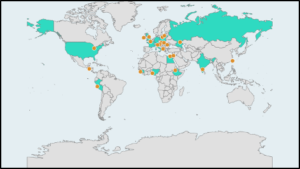
Image Credit to Jenika Gonzales via Global Cleveland
Cleveland has a very large number of sister cities - 23 to be exact.[1]This is quite a few, especially compared to larger cities in the US, such as Houston (18)[2] or San Diego (16)[3]. Cleveland’s sister city partnerships are not only quite numerous, but also, very historically, economically, and politically significant. First, let’s look at the overall rise in the concept of sister cities - and then Cleveland’s own history with them.
Although cities had been unofficially partnered before it became popular, the concept of sister cities gained traction only after World War II.[4] World War II left the world in a very fragile state, and most countries wanted to work towards new goals of international diplomacy, connectedness, and above all else, some form of peace. Average citizens wanted to create a sense of international community but did not have the resources to establish treaties or international organizations. “Sister Cities” or “Twin Towns” became popular, starting in Europe. Towns on opposing sides of past or current conflicts created partner city programs to spread culture and a sense of community, as well as to primarily try to undo any sense of mutual animosity. In the 1950s, The Council of European Municipalities made the “sister city” movement a priority for European localities. In 1956, US President Dwight D. Eisenhower created the Sister Cities International Organization, a nonprofit that promotes international sister city connections and aims to foster bonds between cities and regions.[5]
The most prevalent trends of the post-WWII rise of sister cities are in sister cities in areas that were formally in conflict, including, most prominently, partnerships between the UK and France and partnerships between the US and Japan. Another trend that can be observed is the natural tendency of cities to create relationships with cities that have the same (or a very similar) name as them, though this can be seen even before WWII. Most interestingly, US geographic trends show that West Coast cities are more likely to pair up with Japanese cities, whereas East Coast cities are more likely to pair up with European cities.
Even though sister city partnerships have become more economically-motivated in recent years, Cleveland and numerous other cities have done amazing jobs creating important cultural connections between cities as far as continents away, while also being able to maintain economic relations.
In 1964, under the Mayoral Administration of Ralph S. Locher, Cleveland founded its first sister city partnership with the city of Lima, Peru. This partnership was the result of an initiative by the Women’s City Club of Cleveland. The decision to create the partnership was made in collaboration with Lima City Councilman Fortunato O. Brown. In 1965, a delegation from Northern Ohio, led by Mary Hirschfield, the Plain Dealer’s Latin American correspondent, toured Lima, Peru, and met with the city’s (then) mayor, Luis Bedoya Reyes. The sister city partnership was very exciting for the city and even inspired local suburbs to start their own, though more Cleveland sister city partnerships would not be created until 1973.
In 1971, Mayor Ralph J. Perk took office. Mayor Perk was well known for his participation in the affairs of Cleveland’s Eastern European communities from which he hailed. In 1973, Perk’s administration created a second sister city relationship - with Brașov, Romania. Nicolae Ceaușescu himself chose Cleveland for a new sister city, as a part of a broader political strategy to undermine the USSR’s exertion of its political sphere. Cleveland was the 10th largest city in the US at the time, and the sister city partnership set an important precedent for Romanian foreign policy. However, Mayor Perk saw the partnership as a new avenue into cultural and economic opportunities, and his administration went on to establish ten sister city partnerships, as well as reportedly pursuing partnerships with seven more cities. Cleveland’s high number of sister cities is one of the most prominent legacies of the Perk Administration.
Subsequent mayoral administrations did not dedicate much energy to international relations, focusing instead on domestic issues. Cleveland was pulled back into the global stage with the Cold War. In 1985, left-leaning residents of Shaker Heights and Cleveland Heights sought a partnership with the Soviet city of Volzhsky, an effort which succeeded by 1988. Nearby Clevelanders began to seek a similar city sister association with Volgograd. This was initially vetoed in 1989 but later established in 1990. These sister city partnerships (alongside many others in American cities) were influential to the development of detente between the United States and the Soviet Union. Resulting cultural change helped spread Russian culture through the city. At the time, Russian and Soviet culture was quite demonized, so this was an important step towards both detente and the bettering of relations. Business relations and agreements with the Soviet Union were helpful to the late USSR’s economic goals envisioned under Khrushchev, and even benefitted Cleveland companies.
The impressive successes of Cleveland’s association with Volgograd prompted further enthusiasm for establishing global relations. Under the administration of Michael R. White, six more sister city associations were forged. This included the sister city association with Miskolc, Hungary, which was highly anticipated because of Cleveland’s very significant Hungarian population. In fact, Cleveland’s Hungarian population has historically been one of the largest globally.[6] Unfortunately, Fort Worth, Texas was first in line to create a partnership with Budapest, though Hungarian-Clevelanders were still very excited to have connections with Hungary.
By the start of the 21st century, the administration of Jane L. Campbell established two more sister city associations. Under the current administration of The Honorable Mayor Frank G. Jackson, 4 more sister city associations have been founded - including, most recently in 2019, one with Beit-She’an, Israel.
Finally, here is a quick rundown of the “four waves” of Cleveland’s sister cities.
1964 - Lima, Peru
1973-77 - Brașov, Romania; Ibandan, Nigeria; Ljubljana, Slovenia (then Yugoslavia); Taipei, Taiwan; Bangalore, India; Alexandria, Egypt; Holon, Israel; Cleveland, UK
1990-95 - Volgograd, Russia (then the USSR); Gdańsk, Poland; Bratislava, Slovakia (then Czechoslovakia); Conakry, Guinea; Segundo Montes, El Salvador; Klaipėda, Lithuania; Miskolc, Hungary
2003-19 - West Mayo, Ireland; Bahir-Dar, Ethiopia; Fier, Albania; Rouen, France; Vicenza, Italy; Beit-She’an, Israel
Cleveland has a very important history as a global city. From Lima to Beit-She’an, every single one of Cleveland’s sister cities has been incredibly important to the cultural and economic development of the city. Some prominent sister cities such as Rouen, France and Volgograd, Russia have had very significant histories that have shaped Cleveland and themselves. Cleveland has indicated it is open to new partnerships as well as maintaining its current ones. What’s for sure is that Cleveland will continue to strive for international diplomacy and multiculturalism through its diverse and historic sister city program.
- by Ezra Ellenbogen
Ezra's blog: One Page Stories
[1] https://case.edu/ech/articles/cleveland-sister-city-partnerships
[2] https://www.houstontx.gov/abouthouston/sistercities.html
[3] https://www.sandiego.gov/insidesd/san-diego-sister-cities
[4] https://priceonomics.com/why-do-we-have-sister-cities/
[5] https://sistercities.org/about-us/
[6] https://case.edu/ech/articles/h/hungarians
My Experience Living in the U.S. - by Natalia Sgrinhelli
My Experience Living in the U.S.
- Written by Natalia Sgrinhelli
I spent half of my life strongly asserting that I would never live abroad. I had many arguments to prove how attached I was to my family, friends and culture, and I was willing to list them to whoever insisted a cultural exchange out of country would be a good experience for me. But after many years of insistence of two great friends and a long conversation with a coworker about her own experience abroad, I found myself considering the possibility myself.
At the time I was stagnated in a career that wasn’t fulfilling to me, my home country, Brazil, was showing the first signs of an economic crisis and I had little opportunity for growth. I suddenly understood that being fluent in a second language would improve my professional prospects greatly and I decided to commit to a year of a cultural exchange program in U.S.
It was not an easy process and the emotional challenges started at packing. I will never forget the feeling: it was like I was leaving half of my life behind. The arrival in the U.S. was shock with the language posing as a barrier itself. Very simple tasks, like grocery shopping or using public transportation, demanded all my energy and concentration. On the other hand, I will also never forget the day I could obtain a Social Security Card by myself. I was in the country for a couple weeks only, but the sense of achievement I felt remains with me to this date.
My exchange program allowed me to meet many young women from different countries, that I now consider my dear friends. It is strange and marvelous how we became a type of family to each other, considering not even our native languages are the same. I also formed a bond with the program counselor, a strong and kind woman that guided all of us while we were here. I learned so much from her and all the girls about diversity when hearing the stories from their home countries. I learned to respect differences and to look at people with more kindness, because each person has a personal journey which we know nothing about.
I was also very fortunate to live with an amazing host family that opened their house to me like it was my own. With their guidance and support, I enrolled in an MBA program. I had never imagined I would be able to attend university in a foreign country. It was one of the biggest challenges of my life to obtain a diploma using my second language.
My hardest task, however, was dealing with homesickness. This is the only word I know to define feelings that I cannot put in words. I like to describe my life in U.S. as a roller-coaster: some days I believe it is the best decision I have ever made and others I cannot explain why I decided to be away from Brazil. Luckily, I have had more days on the top. As time passed, I felt more immersed in the American culture. Everything became more familiar and less overwhelming.
I have been living in the U.S. for four and half years and this situation became more permanent now that I am happily married. My time here was only meant to advance my professional career but ended up being my most significant period of personal growth. After all this time, I realized that I did not leave my life behind, as I can barely remember the things I could not fit in my suitcase. I understood that my feeling of loss came from separating from my family and friends and, although time really does help us heal, I still miss them. Most importantly, I learned that my perception of belonging is strongly influenced by the ones around me. I came to love many people from a different country that I now dread having to separate from the same way I did when I left my home country years ago.
How Living Abroad Changed the Way I Interact with Newcomers - by JP McMaken
How Living Abroad Changed the Way I Interact with Newcomers
- Written by JP McMaken
People move sometimes, and they move for a ton of different reasons. Chances are you have either moved somewhere new, or have come across someone in that situation. I personally, at the age of 11, moved across the Atlantic Ocean to Switzerland, where I lived until the age of 15. Living there was the best and worst experience of my life, but it was nothing if not transformative. Until that point, I had rarely left my hometown, and I had very little interaction with people who didn’t live less than 20 minutes away from my house. After being thrust into a completely new continent, environment and culture, I became the newcomer, the stranger. Living abroad gave me the chance to experience what it was like to have to adapt. Looking back on it now, it is possible to see how I was treated, and mistreated, to discover how to interact and welcome newcomers I come across in my own space.
The Stress They’re Dealing With
Do you remember the stress of your first day at a new school? Or maybe your first job interview? The fear of an environment you are unfamiliar with, the knowledge that you are being watched and judged by people that are in said environment. That stress is similar to what newcomers have to experience for a long period of time. This is only worse if the newcomer doesn’t speak English as their first language (or whatever language is spoken in the area). The environment becomes not only new, but near hostile when you can’t understand what the people around you are saying. Speaking from personal experience, this level of stress can dominate your thoughts on a near daily basis, especially if there is nobody there to help out.
Stereotypes: They Don’t Help
While this concept is reinforced everywhere, it is still important to mention. There are stereotypes for everyone, every nationality, profession. I personally was bullied a lot when I was living abroad based on American stereotypes. I was told that Americans were stupid, fat, and entitled. I found myself trapped in a defensive battle with these bullies, trying unsuccessfully to prove through my actions that not all Americans were like that, but that only served to inflame them further whenever I made a mistake. For example, I’m a slow eater, like very slow. Kids would see me eating for longer than everyone else, and assume that I was just a fat American eating my second or third helping, when I was just taking my time. I didn’t think I fit those stereotypes, nor did I think that the other Americans I met abroad fit them either. People aren’t defined by stereotypes, and every person is different. This fact is important to remember, because it is so easy to just fall into sorting people based on stereotypes.
What I Learned
In school in Switzerland, I wasn’t placed in a regular classroom. I, along with about 10 other international students, were separated from the rest of the student body and placed in their own class, in order to focus on the development of speaking French. While that would make sense academically, that decision without a doubt ruined my class’s chances socially. Interacting with other local students during gym class and recess became a nightmare. Because we didn’t work together, and were only seen during times of little teacher supervision, I never had the chance to be introduced to these kids. They didn’t know me, and therefore I was a target. Not only did the bullying not help me, but it also hindered my language development. A lot of language use is in casual conversation, not just in academia. If I had even one local student reach out to me, it would have helped significantly, in both reducing my stress of being new and my language development. It is surprising how much of a new language you can learn by interacting with people outside of learning in an academic setting. I can assure you that newcomers you may meet in the future will be grateful if you reach out to them first to try and ease them into their environment. After all, it is the one you’re comfortable with.
- By JP McMaken
Cleveland and Rouen: A Pair of Sister Cities That Go Back 100 Years - By Ezra Ellenbogen
Cleveland and Rouen: A Pair of Sister Cities That Go Back 100 Years
-Written by Ezra Ellenbogen
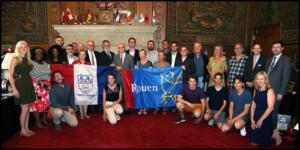
A Picture From the 10 Year Anniversary Celebration (clecityhall.com)
Although Rouen and Cleveland technically established their official sister city relationship in 2008,[1] the strong cultural and political relationship between the cities has existed for over a century. The sister city relationship between Rouen, the French city of around 112 thousand, and Cleveland, the American city of around 388 thousand, started unusually. That is, it started with a medical unit in World War I France.[2][3]
When World War I broke out, the American Ambassador to France, Myron Herrick (a Clevelander himself), asked renowned surgeon and physician, George Washington Crile, to organize a surgical team to assist French forces.[4] Dr. Crile recruited a team of volunteer nurses and surgeons from Lakeside Hospitals in Cleveland (now University Hospitals). The “Lakeside Unit,” as it was called, worked across Northern France, especially near Rouen and Paris. Through the two years of being stationed in France (1915-1917), the Lakeside Unit grew significantly in size and treated over 83,000 patients from both sides of the war. Dr. Crile and his group heavily changed the quality of overseas medical services for the better and were able to apply results from their work to further innovations in the medical field. Dr. Crile’s revelations and new medical ideas inspired him to co-found today’s Cleveland Clinic along with three other doctors from the Unit: Frank E. Bunts, William E. Lower, and John Philips.[5]
Cultural and economic links between the cities exist as well. First, French immigration to Cleveland never grew especially rapidly, and instead, developed gradually. That is, although the number of French immigrants was often rather low in pre-Industrial Cleveland, they certainly influenced the culture and diversity of the city and its surrounding region over time.[6]
As for economic ties: a handful of Cleveland companies, including most prominently, Lubrizol, Lincoln Electric, and MTD Products, are major employers in Rouen.[7][8] In fact, business ties helped drive the decision to partner the cities. Yannick Le Couedic revived the local chapter of the French-American Chamber of Commerce and encouraged the city of Cleveland to build on its foundation of relations with Rouen. Le Couedic is a retired Lubrizol executive who grew up in France and lived in Northeast Ohio. In 2008, Mayor Frank G. Jackson established a sister city partnership with Rouen with hopes of economic and cultural exchange. This sister city relationship went on to become one of the most productive, as well as one of the most culturally and economically significant that Cleveland has ever had.
Since it was established, the Cleveland-Rouen sister city relationship accomplished numerous goals. In January 2008, a delegation from Rouen visited and toured Cleveland Clinic. Since then, medical facilities in both cities have kept in touch. Later, the head of MTD Products in France, Philippe Obadia, checked out a new commercial mower in Cleveland and toured MTD factories across the state. Airlines, businesses, mayors, artists, and more have all been involved in the action.
In 2018, Cleveland and Rouen’s sister city relationship reached its 10th anniversary, strong as ever. In celebration, Cleveland and Rouen had a ‘mural exchange’ project and coordinated a Bastille Day celebration on July 14th in Cleveland. Bastille Day is a French national holiday commemorating the storming of Bastille - a fortress and prison - on July 14th, 1789, an event which helped usher in the French Revolution.[9] The 6-hour Bastille Day reflected French culture with a celebration that included food, live entertainment, and more.
The mural project started with Paatrice Marchand, a Rouen artist, creating the well-known “fried eggs” mural on the side of Market Garden Brewery.[10] The mural depicts fried eggs floating about the sky like clouds, and says, “If you see a cloud behind the sun, it must be an egg.” Later that year, local Cleveland artist Lisa Quine was chosen to paint a mural in Rouen in collaboration with French graffiti enthusiast group “Idem & Mozaik.” The roughly 2,500 square feet large mural ended up as a splash of color and geometry, with a broad banner that reads “All colors are beautiful.[11]”
Rouen and Cleveland have a strong sister city partnership that has promoted economic and cultural development and exchange. In fact, the two cities, in collaboration with the French-American Chamber of Commerce, are designing and launching a French cultural garden in Cleveland by Spring 2020.[12] You can find out more about this exciting project at faccohio.org/foundation. From the arts to business, Rouen and Cleveland have helped develop each other culturally and economically. Here’s to another 100 years of good relations!
- by Ezra Ellenbogen
Ezra's Blog: One Page Stories
[1] https://case.edu/ech/articles/cleveland-sister-city-partnerships
[2] https://www.worldometers.info/world-population/france-population/
[3] https://www.worldometers.info/world-population/us-population/?TB_iframe=true&width=370.8&height=658.8
[4] https://www.cleveland.com/metro/2017/04/cleveland_clinic_co_founder_george_crile.html
[5] https://ohiohistorycentral.org/w/Cleveland_Clinic
[6] https://case.edu/ech/articles/f/french
[7] https://www.cleveland.com/business/2008/04/it_was_the_war_to.html
[8] https://clecityhall.files.wordpress.com/2018/07/2018-rouen-cleveland-sister-city-10th-anniversary-proc.pdf
[9] https://www.history.com/topics/france/bastille-day
[10] https://clevelandtraveler.com/cleveland-mural-guide/
[11] https://rouen.fr/idem-mozaik
[12] https://www.faccohio.org/foundation.html
Taipei and Cleveland - By Ezra Ellenbogen
Taipei and Cleveland
- Written By Ezra Ellenbogen
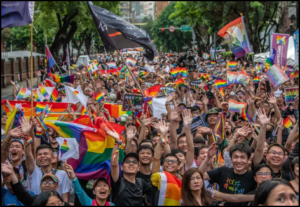
An image of a Pride event in Taipei
Image Credit to Carl Court / Getty Images
June is Pride Month in the United States! In the United States, LGBTQ+ rights have come a long way since the original Stonewall riots (though there is still some progress to be made), but globally, LGBTQ+ citizens are most often not given the same rights as straight citizens, and even sometimes considered illegal. Unfortunately, Asia is home to little progress in this field, but Taiwan has pioneered LGBTQ+ rights in a region where such rights are almost unheard of.[1]Taiwan’s capital is Taipei - and the city of Taipei is a sister city of Cleveland. First - a bit of background.
On September 25th, 1975, former Cleveland Mayor Ralph J. Perk and former Taipei Mayor Lin Yang-Kang partnered their cities as sister cities.[2] Taipei City is a very friendly city, as shown with their total of 52 sister city partnerships (Cleveland has 23 including Beit-She’an).[3] In 1985, Taipei City generously gifted the Chinese Cultural Garden to Cleveland.[4] The beautiful garden was modeled after the Chinese Imperial Palace and includes two Chinese dragon statues as well as one of Confucius. In 1990, the state of Ohio and Taiwan became “sister states.[5]” Ties between the two regions have been positive throughout the sister city relationship.
In 2016, Taiwan was the 6th largest export market in Asia for Ohio. Business interactions between Taiwanese businesses and the city of Cleveland have helped diversify the reach of numerous Taiwanese products. Moreover, Taiwanese students have had numerous scholarly opportunities in Cleveland, especially with Case Western Reserve University. Reciprocally, Cleveland students have had similar academic opportunities in Taiwan, and both sides of the exchange have helped spread Taiwanese and Cleveland culture.[6] For instance, in May 2019, 16 Taiwanese high-school-age music students visited the city of Cleveland, welcomed by a local delegation that later traveled to meet the same group in Taiwan. While visiting Cleveland, the students toured three world-renowned music conservatories across Northeast Ohio, learned about music therapy, and more. In Taipei in October, Cleveland’s delegation of 3 high-school students participated in local music-themed activities and music service learning projects, visited local temples, learned about playing the Chinese Zither (Guzheng), and more.
Taiwan is known for its progressiveness with LGBTQ+ rights, as well as its festive Pride celebrations. The country’s rights for members of the LGBTQ+ community are still developing, but they are certainly the most forward in the region. Taiwan has a large and flourishing LGBTQ+ community, and a record 200,000 people participated in Taipei’s 2019 Pride parade.[7] For comparison, 80,000 people attended the 2015 Taipei Pride event.[8] The main reason for the sudden influx of pride and celebration was that Taiwan legalized same-sex marraige that year. The struggle for LGBTQ+ rights in Taiwan has been a long and politically divisive one.[9] Taipei’s Pride march started in 2003, and since then, there has been a major political movement behind legalizing same-sex marraige in the country.
In 2016, the first female president of Taiwan, Tsai Ing-wen, was elected, and expressed clear support for the LGBTQ+ community as well as its members’ legal rights. In 2017, the Taiwanese constitutional court struck down the Civil Code’s definition of marriage being only between a man and a woman, and this led to a political struggle throughout Taiwan’s government that resulted in the 2019 legalization of same-sex marraige by President Tsai.
Taiwan is well-known globally for its modern Pride celebrations. In fact, Taiwan’s Pride parades most often include international groups. Taiwan is a beacon for LGBTQ+ rights in Asia, and the country’s Pride celebrations include Pride movements from other countries that are not supported by their own state, including prominent Hong Kong LGBTQ+ movements.[10]
Pride celebrations in Taiwan typically occur in the month of October, which is known as LGBTQ+ History Month, or sometimes Queer History Month. In the United States, Pride celebrations are typically in June, to commemorate the Stonewall riots. October was chosen for other countries’ Pride months to coincide with Coming Out Day - which is October 11th.[11]
Taipei City and Cleveland have a history of cooperation and beneficial cultural exchange. Moreover, now is a good time to recognize and appreciate the progress made by Taiwan, not only for its cultural diplomacy with the United States and especially Cleveland, but also for its wondrous progress with LGBTQ+ rights. It is important to recognize the progress that has been made globally, as well as what still needs to be accomplished.
Happy Pride Month!
[1] https://www.ozy.com/news-and-politics/special-briefing-is-asia-becoming-gay-friendly/94470/
[2] https://english.sec.gov.taipei/cp.aspx?n=2789B64DFDD8B838
[3] http://www.tcc.gov.tw/en/cp.aspx?n=81569D74DD82C7DB
[4] https://case.edu/ech/articles/c/cleveland-cultural-gardens
[5] https://english.moe.gov.tw/fp-117-22292-DAE02-1.html
[6] https://www.ccwa.org/building-bridges-from-cleveland-to-taiwan/
[7] https://focustaiwan.tw/society/201910260006
[8] https://oftaiwan.org/social-movements/lgbtq-movement-in-taiwan/
[9] https://www.nytimes.com/2017/05/24/world/asia/taiwan-same-sex-marriage-court.html?mwrsm=Facebook&_r=0
[10] https://www.nbcnews.com/feature/nbc-out/taiwan-pride-bigger-ever-beacon-lgbtq-rights-asia-n815641
[11] https://www.wright.edu/diversity-and-inclusion/culture-and-identity-centers/lgbtqa-affairs/international-lgbtqa-dates-to-know



